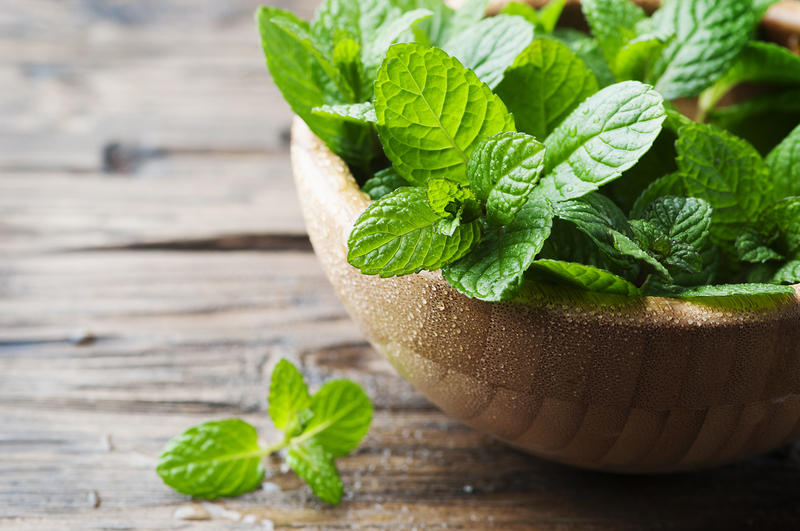Master the Art of Cleaning Stubborn Stove Residue
Posted on 15/09/2025
Master the Art of Cleaning Stubborn Stove Residue: A Comprehensive Guide
Every kitchen not only tells the story of meals prepared, but often bears the marks--grease splatters, burnt-on sauces, and stubborn residue--of culinary adventures. Learning how to clean stubborn stove residue is not just about aesthetics; it's also about maintaining a hygienic space and prolonging the life of your stove.
Why Is It Important to Remove Stubborn Residue from Your Stove?
- Prevents bacterial and mold growth--Leftover grease and spills can become breeding grounds for unwanted microorganisms.
- Improves appearance--A clean stove is the centerpiece of a sparkling kitchen.
- Ensures safety--Built-up residue can lead to smoke, unpleasant odors, and even kitchen fires.
- Maintains stove performance--Clogged burners or elements may heat unevenly or stop working altogether.

Understanding the Different Types of Stove Residue
Stoves, whether gas, electric, or induction, face a range of tough scum and burnt-on gunk. To remove stubborn residue from a stove effectively, it's helpful to know what you're up against:
- Grease splatters--Common with frying and sauteing, often sticky and attract dust.
- Burnt-on food--Spills that get baked onto surfaces, becoming difficult to scrub off.
- Sugar spills and caramelization--Particularly stubborn, as sugar hardens into a glass-like, sticky crust.
- Oven cleaner and chemical buildup--Residue from improper cleaning, which can attract more grime.
Essential Tools for Tackling Stubborn Stove Residue
Before you begin to clean tough stove residue, gather these essential supplies:
- Baking soda
- White vinegar
- Dish soap (degreaser)
- Non-scratch scrub pads or sponges
- Microfiber cloths
- Plastic putty knife or scraper
- Old toothbrush
- Spray bottle
For gas stoves, you may also need:
- Small cleaning brush for burner jets
- Paper clips for stubborn clogs
Step-by-Step Guide: How to Clean Stubborn Stove Residue
1. Safety First
Turn off all burners and unplug electric stoves before cleaning. If your stove is still hot, wait until it cools down to avoid burns and accidental damage.
2. Remove Detachable Parts
Take off knobs, burner grates, and drip pans (if applicable). Soak these in hot, soapy water to loosen grease and stubborn residue.
3. Make a Cleaning Paste
Combine baking soda and water (or vinegar for tough stains) to form a thick paste. Baking soda is a natural, gentle abrasive that can break down stubborn stove gunk without scratching surfaces.
4. Apply the Paste Generously
Spread your cleaning paste over the stained areas--especially on burnt-on food or greasy build-up. Let this sit for at least 15-20 minutes to allow the baking soda to penetrate the residue.
5. Spritz with Vinegar
Fill a spray bottle with white vinegar and spritz over the baking soda paste. It will fizz, helping to lift even the most stubborn stove residue.
6. Scrub and Wipe
Using your non-scratch scrub pad or a microfiber cloth, gently scrub in circular motions. For especially persistent residue, use a plastic scraper to lift off the gunk gently. Avoid metal scrapers, which can damage your stove's surface.
7. Pay Attention to Details
Don't forget crevices and tight spaces around burners or stove edges. Use an old toothbrush or small brush dipped in your baking soda paste to clean hard-to-reach stove residue.
8. Rinse and Dry
Wipe down the entire surface with a damp microfiber cloth to remove any cleaning residue. Re-wipe with a dry cloth for a streak-free finish.
9. Deep Clean Soaked Parts
Scrub burner grates, drip pans, and control knobs with soapy water and a brush or sponge. If they're still greasy, sprinkle baking soda, then scrub again. Rinse thoroughly, dry completely, and reassemble your stove.
10. Finishing Touches
Buff the surface with a clean, dry microfiber cloth for extra shine. For glass or ceramic cooktops, use a specialized cleaner after removing heavy residue for a pristine finish.
Stubborn Stove Residue Cleaning Hacks
Using Lemon Juice for Grease
Natural degreasers like lemon juice can be effective. Cut a lemon in half, dip in salt, and rub it over greasy spots for an added abrasive effect.
Hydrogen Peroxide and Baking Soda
For severe stains, sprinkle baking soda, then pour a small amount of hydrogen peroxide. Let it bubble, then scrub gently and wipe clean.
Commercial Cleaners
Heavy-duty degreasers or specialized stove cleaners are available for particularly intense build-up. Always follow the manufacturer's instructions to avoid damaging your stove's finish.
Boiling Water Technique
Pouring boiling water over encrusted residue (on a cool, unplugged stove) can help soften it. After letting it sit, the grime should come off easily with a sponge.
Tips for Cleaning Different Types of Stoves
Gas Stoves
- Remove burner caps and grates before cleaning.
- Use a small brush or straightened paper clip to unclog burner holes. Never enlarge the holes, as it affects the flame.
- Clean beneath the burners; food easily collects there.
Electric Coil Stoves
- Lift out the coils (make sure they're cool and unplugged).
- Wipe surrounding drip pans and surfaces thoroughly.
- Never submerge electrical coils in water--wipe with a damp cloth if needed.
Glass or Ceramic Cooktops
- Use a razor blade scraper at a shallow angle for stuck-on residue. Be cautious to avoid scratching the surface.
- Always use non-abrasive cleaners and sponges to maintain the pristine surface.
Preventing Future Stubborn Residue on Stoves
Prevention is easier than removal. Here's how you can minimize mess and keep your stove shining:
- Wipe spills immediately--A quick once-over after cooking prevents grime from hardening.
- Use splatter guards--Especially when frying.
- Foil or silicone liners--Place under burners or in drip pans for easier cleanup.
- Deep clean weekly--Schedule a thorough clean before residue builds up.
- Dish soap and hot water wipe-downs--Even a daily habit can make a big difference.
Addressing Common Myths About Cleaning Stove Residue
Myth 1: "Only expensive, harsh cleaners work on burnt residue."
Fact: Natural solutions like baking soda and vinegar are highly effective for tough stove stains and much gentler on both you and your appliance.
Myth 2: "Scraping with metal tools is safe if you're careful."
Fact: Metal tools can easily scratch both enamel and glass top stoves. Always use plastic scrapers or specialized stove cleaning tools.
How Often Should You Deep Clean Your Stove?
The frequency of deep cleaning depends on your cooking habits. For an average household, aim for:
- Light Cleaning: After every use (wipe down spills and grease).
- Moderate Cleaning: Weekly (remove grates, wash down).
- Deep Cleaning: Monthly or as needed (scrub with paste, detail work).
Of course, high-volume cooks should consider more frequent cleaning to prevent stubborn stove residue from building up.
Eco-Friendly Stove Cleaning Solutions
While commercial cleaners are convenient, they often contain chemicals that can be harsh on your home and the environment. Opt for green cleaning alternatives:
- Baking soda and vinegar: Breaks down grease and neutralizes odors naturally.
- Lemon juice: Acts as a natural degreaser and brightener.
- Castile soap: Gentle for regular maintenance and safe for most surfaces.
- Essential oils: Add a few drops (like lemon or tea tree) for antibacterial properties and a fresh scent.

Advanced Techniques for the Most Stubborn Stove Residue
Steam Cleaning Method
Steam loosens baked-on residue without the use of harsh chemicals. Use a household steam cleaner or create steam by boiling water in a pan and let the steam work for 10-15 minutes. Wipe away loosened grime with a microfiber cloth.
Using Enzyme Cleaners
Enzyme-based cleaners break down protein- and starch-based stains. Apply as per instructions for persistent greasy messes that resist traditional methods.
Final Thoughts: Master Your Stove Cleaning Routine
Learning how to clean stubborn stove residue is a skill every home chef should master. With the right knowledge and a little elbow grease, you can restore your stove to a like-new condition--and make future cleaning much easier. Don't let fear of difficult cleaning tasks keep you from whipping up your favorite dishes. Armed with proven techniques and eco-friendly solutions, you can transform your stove from grimy to gleaming!
Quick Summary: Your Stubborn Stove Residue Cleaning Toolkit
- Baking soda + vinegar for most residue
- Plastic scraper for tough spots
- Microfiber cloths for wiping and polishing
- Daily habits for easy maintenance
Ready to tackle your toughest stove stains? Start today, stick with the best habits, and your kitchen will always be ready to impress--no matter what's cooking!




